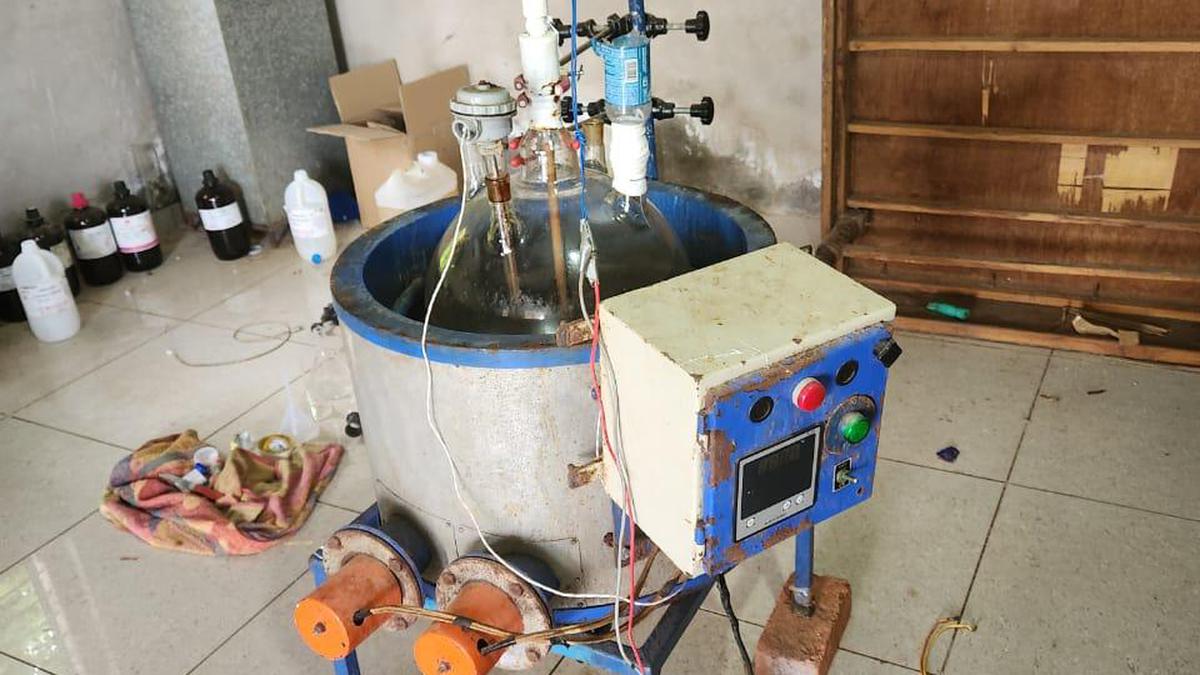The Kashmir Himalaya is known for the cultivation of mushk budiji, an indigenous rice variety distinguished for its rich aroma and unique taste. Recently, scientists at the Sher-e-Kashmir University of Agricultural Sciences and Technology (SKUAST), Srinagar, reported that altitude and temperature play an important role in the development of this aroma.
In a study recently published in Nature Scientific Reports, they have reported identifying around 35 aromatic compounds in the variety at eight altitudes between 5,000 and 7,000 feet across the valley.
Mushk budiji was on the verge of extinction for some time due to various factors. Chief among them was the prevalence of rice blast disease, its low yield, and lack of profitability. But a revival programme launched in 2007 by SKUAST scientists saw the crop make a slow comeback.

Gaurav Zinta, senior scientist at the CSIR-Institute of Himalayan Bioresource Technology in Palampur, Himachal Pradesh, said the study “serves as a foundational work to understand the intricate relationship between altitude and aroma development in an indigenous rice variety.” He wasn’t involved in the study.
GC-MS and e-nose
“Surprisingly, there hasn’t been any comprehensive study conducted to determine the most suitable locations for the cultivation of mushk budiji,” Syed Zameer Hussain, professor and head of the Division of Food Science and Technology, SKUAST and corresponding author of the study, said. “Motivated by this gap in knowledge, we decided to conduct a study of selected locations on the flavour profile of mushk budiji using gas chromatography-mass spectroscopy (GC-MS) and an ‘electronic nose’.”
These locations spanned Kupwara near the region’s northern edge to Khudwani in Anantnag in the south.
GC-MS is an analytical method used to reveal the presence of volatile compounds present in organic mixtures extracted from geological, environmental, and biological samples. The e-nose is a tool fit with various sensors as well as an artificial intelligence (AI) component; it assessed the flavour attributes of rice samples.
Based on these studies, the scientists identified 35 volatile organic compounds (VOCs) in mushk budiji rice samples. Of these, the concentration of aldehydes (molecules containing the functional group -CH=O) ranged from 6.33% to 29.09% and alcohols (-OH) from 0.47% to 30.34%.
According to Ufaq Fayaz, the lead author of the study and research scholar at SKUAST, 2-acetyl-1-pyrroline (2-AP) is a known aromatic compound found in some varieties – but it was present only in mushk budiji samples collected from higher altitudes, particularly in the districts of Budgam and Kupwara.
Dr. Hussain also said 2-AP wasn’t the only compound that contributed to mushk budiji’s distinct aroma. The team found this through the e-nose analysis of samples from locations that lacked the presence of 2-AP. This, according to him, is “contrary to common perception”.
A genetic component
The team also used “gene-expression analysis to understand the influence of various environmental factors across the eight locations,” Dr. Fayaz said.

This analysis is a crucial tool for scientists to understand how genes work. It involves studying which genes are active and producing proteins in a given cell or tissue at a specific time. After the rice panicles from all the selected locations were collected, the researchers isolated RNA from each sample using standard lab protocols. (RNA is a molecule that carries genetic information from DNA and which a cell uses to make proteins.)
The researchers converted the RNA to a form more amenable to analysis. Finally, using the real-time polymerase chain reaction (RT-PCR) process, they amplified the presence of different bits of RNA pertaining to the sets of candidate genes responsible for degrading fatty acids and metabolising linoleic acid and ether lipids. In this way, the researchers were able to identify which genes were turned ‘on’ or ‘off’ and how much of each gene’s RNA was present.
Dr. Fayaz added that the results from the gene-expression analysis matched those from the GC-MS and e-nose analyses – indicating that the environment guides mushk budiji’s flavour profile through its genes.
Advantage for farmers
Dr. Zinta said aromatic rice has considerable value worldwide for its distinct flavour, fragrance, and quality, its potential to enhance dining experiences, and its appeal to health-conscious consumers.
To this, the SKUAST researchers said mushk budiji’s export potential could be maximised by cultivating it in places where the environmental conditions cause the variety’s flavour compounds to be expressed the most.
Together with “innovative packaging” to “improve the appeal of these rice varieties in the international market”, their findings could “pave the way for significant economic growth in the agricultural sector,” Dr. Hussain said.
Nonetheless, he also flagged the need for more studies – including the need to understand the mechanisms that drive heightened gene expression in certain locations.
‘An important step’
Dr. Zinta also said that while the study offers valuable insights into the flavour profile of mushk budiji rice and its correlation with altitude, it has limitations as well. One lies in the limited scope of the study: it focused solely on altitude as a factor influencing aroma development, whereas other environmental variables such as soil type and climatic conditions were considered but not extensively explored.

Additionally, although the study identified the over-expression of specific genes to be associated with the synthesis of the aroma at higher altitudes, he echoed Dr. Hussain to say the exact mechanisms linking altitude and gene expression remain to be fully elucidated. “So most of the outcomes of the work are based on correlation rather than causation.”
He also said that the GC–MS and e-nose techniques – which the researchers used to profile the rice variety’s flavour – may not capture the entire spectrum of VOCs that are responsible for the aroma.
Even so, Dr. Zinta continued, “the study represents an important step towards understanding the complex interplay between environmental factors and genetic mechanisms in shaping the aroma of aromatic rice varieties like mushk budiji.”
‘Gene expression on global scale’
Wajid Waheed Bhat, an assistant professor and the DBT-Ramalingaswami fellow at the division of Basic Sciences and Humanities in SKUAST-Kashmir, also said the authors have examined the expression of certain genetic pathways related to the biosynthesis of lipids (fat molecules) and their degradation, and tried to correlate these findings with the rest of the metabolomic and altitudinal VOC data. According to him, this was a much-needed first step towards understanding the biosynthesis and regulation of VOCs in mushk budiji.
“This also serves as the basis for selecting the best location with respect to altitude and climatic conditions for growing this endemic rice variety in Kashmir,” Dr. Bhat said.
“However, the study would have vastly benefited by studying gene expression on a more global scale, via whole-sample transcriptome sequencing,” he added.
In whole-sample transcriptome sequencing, the entire set of RNA molecules present in a sample is captured for analysis, allowing researchers to identify all active genes and their expression levels.
Performing this sequencing, according to Dr. Bhat, would have provided “a much larger picture of the genetic actors involved in this intricate network of gene regulation vis-à-vis VOC biosynthesis, and the effect of external abiotic and biotic factors.”
Hirra Azmat is a Kashmir-based journalist who writes extensively on health and environment. Her stories have appeared in various local and national publications.

 1 month ago
108
1 month ago
108



